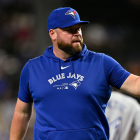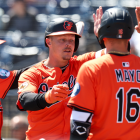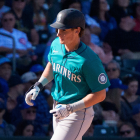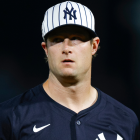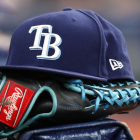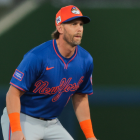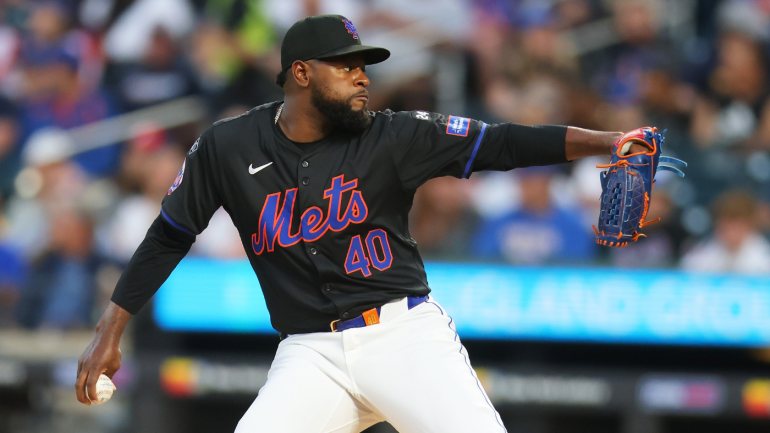
Last week, the San Francisco Giants and third baseman Matt Chapman agreed to terms on a new six-year pact worth $151 million. From Chapman's perspective, the extension can be viewed as a correction. Remember, he had to settle for a shorter, less lucrative three-year, $54 million deal last winter. The one saving grace of that contract was that it provided him the ability to re-enter the free-agent market after each season.
Chapman, 31, was certain to cash in on that opportunity this offseason. He's in the midst of his best park-adjusted offensive showing since the pre-pandemic days, and he remains a highly skilled defender who may win his fifth career Gold Glove Award. He also seems certain to secure down ballot Most Valuable Player Award consideration for the first time since back in 2019. That aforementioned opt-out clause, meanwhile, instilled a sense of urgency in the Giants to get a deal done before the market opened.
Chapman's arc, from being passed over left and right to being considered irreplaceable in a matter of months, got us here at CBS Sports thinking about other prospective free agents who have markedly impacted their outlooks this season. With that in mind, we put together a list of 10 looming free agents who have either boosted or cratered their stock.
Let's get to it.
Helped their stock
1. Blake Snell, LHP, Giants
It's fitting that Snell is teammates with Chapman given how much they have in common. The reigning NL Cy Young winner too found himself on the free-agent market longer than anticipated last offseason, resulting in a contract that contained an opt-out clause. After a slow start to the season -- the kind of thing that's easy to write off when a player has an atypically short ramp-up period -- Snell has regained his form and looks certain to re-enter the market. Teams may still have reservations about his command and his durability (though he did throw his first career complete game, a no-hitter, earlier this season), but we have to imagine that he's going to get his deserved long-term contract.
2. Jack Flaherty, RHP, Dodgers
It was around this time last year when the Orioles relegated Flaherty to the bullpen for the stretch run after acquiring him at the deadline with the hopes that he would boost their rotation. He was again on the move this July, but unlike last year he's thus far nailed the landing. Flaherty is applying the finishing touches to his best season (in terms of results and availability) since 2019. Provided nothing funky happens over the coming months, he should be in line to receive a far more lucrative arrangement than the pillow contract (one year, $14 million) he inked last winter with the Tigers.
3. Jurickson Profar, OF, Padres
It took more than a decade to get here, but this is the kind of season that evaluators expected from Profar back when he was held as the game's top prospect. Now, will anyone actually buy in? There are some legitimate underlying reasons to think Profar has improved as a player: he's hitting the ball harder (on average and in frequency); he's tightened his strike zone; he's striking out less often; and so on. But he's also going to be a 32-year-old left fielder whose defense can be charitably described as a negative. On the bright side, the industry doesn't have to rush to reward Profar for him to do better -- significantly better even -- than his current one-year, $1 million deal.
4. Anthony Santander, OF, Orioles
Santander is evidence that the Rule 5 draft can still launch notable careers. (The Orioles plucked him from the Guardians in 2016.) He's about to wrap up a three-year stretch that has seen him develop into a switch-hitting, middle-of-the-order dynamo. Teams aren't as quick anymore to hand over massive long-term deals for corner outfielders with below-average gloves. Even so, we think it's fair to write that entering free agency after a 40-homer season helps your chances of achieving generational wealth.
5. Luis Severino, RHP, Mets
Severino's results are obviously a good deal better this season than last, but don't sleep on another important development so far his free agency goes: his workload. This year is the first time since 2018 that he's thrown as many as 110 innings. Severino joined the Mets on a one-year deal worth $13 million over the winter. We have to assume he's going to be in a good position to fetch at least a two-year deal this time around.
Hurt their stock
1. Gleyber Torres, 2B, Yankees
Torres, to his credit, has performed better during the second half. Still, he had a chance to solidify himself as a top-10 free agent heading into the winter: a 28-year-old second baseman with three consecutive 20-homer, three-WAR seasons. Instead, he'll be doing well to finish with a league-average OPS. Perhaps this proves to be overly pessimistic, but at this point he seems like a prime candidate to take a pillow contract.
2. Alex Verdugo, OF, Yankees
From one scuffling Yankees hitter to another. Verdugo remains a skilled defender, but that's not what gets corner outfielders paid. Unfortunately for him, he chose a poor time to snap his streak of five consecutive league-average offensive seasons. Verdugo, who won't celebrate his 29th birthday until next May, also seems like a candidate to settle for a one-year pact as he attempts to rebuild value heading into next winter.
3. Paul Goldschmidt, 1B, Cardinals
We're prone to pointing out how cold the marketplace usually is for aging right-right first basemen. Goldschmidt, who recently confirmed that he intends to play beyond this season, seems unlikely to be the exception. He'll head into free agency after celebrating his 36th birthday and posting the worst offensive marks of his career. The reality is that Goldschmidt would've probably had a tough time landing a big deal if he had a solid year; now, he's all but certain to settle for a one-year arrangement.
4. Danny Jansen, C, Red Sox
Jansen had the opportunity to cement himself as one of the top offensive catchers on the open market. Alas, he's whiffed completely: first underperforming with the Blue Jays, then cratering since joining the Red Sox. Jansen is now sporting his worst OPS+ since he established himself as a big-league regular, further complicating a free agency that was always likely to be a little polarizing given his long-standing durability issues. Teams are perpetually in search of competent catching, so Jansen should find himself of interest all the same. We do think he's cost himself some money, however.
5. Max Kepler, OF, Twins
Timing is everything. If Kepler had qualified for free agency last winter, following a quality effort that saw him post the second-best OPS+ of his career, he would've had his pick of multi-year offers. Hitting the open market this winter means doing so after having what might amount to a career-worst showing. It doesn't help Kepler's case that he'll turn 32 in February, or that his underlying metrics include some concerning developments (including a reduction in quality contact and walks). As with everyone else on this side of the ledger, we're guessing he has to settle for one year.










